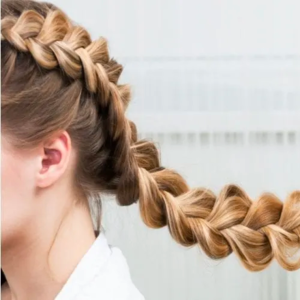With your 2020 health and fitness goals in motion, it’s high time you found the right running shoe for you as the perfect footwear can help you step up your game. But finding the right fit is not as simple as it sounds, especially after stepping one foot into your local athletics store only to come face to face with a limitless selection of running shoes spread across the luminous display wall. The whole searching for a shoe conquest can be a little overwhelming, something you didn’t bargain for when drafting your fitness plan. Alas, we are here to make your life a little easier with a comprehensive outline on running shoes and a series of fool-proof tips to help you snatch up the best gear next time you hit the store.

The anatomy of running shoes
With a greater understanding of the various elements of running shoes, you can more effectively make a purchase that will get the best bang for your buck. Whatsmore, you will be equipped with the right running lingo to flaunt as you peruse the selection in-store and chat with your running friends. Some key terms to keep in mind when shopping for the perfect shoe: The “upper” portion is the top part of the shoe bound by the laces that supports the shape and protects against environmental elements. The “tongue” is the strip of fabric lying underneath the laces that protects the foot from them rubbing against it. The “heel counter” is the exoskeleton of stiff material that wraps around the heel. The “last” is the foot-shaped mold that serves as the foundation on which the shoe is crafted. The “toe box” is pretty self-explanatory, it’s the area of the shoe housing the toes. The “midsole” is the layer of foam lying between the upper and outsole, providing shock absorption during motion. Finally, the “outsole” is the layer of rubber that forms the base of the running shoe.
Couple a basic understanding of the running shoe’s anatomy with the following top tips to finding the best shoe and you will be good to get out and go in no time!
1. Set support expectations
Pronation, the rolling motion the foot experiences from heel to toe when it strikes the ground, differs between individuals and requires different support solutions from selected running shoes. The three types of pronation and appropriate running shoes for each are as follows: basic pronation is when the foot rolls normally, in which case neutral shoes will work just fine. On the other hand, overpronation is when the foot rolls inwards, in which case you will need stability or motion control shoes. Finally, supination is when the foot rolls outwards, meaning neutral shoes will do the job as well.
2. Figure out your fit
Beyond ensuring that you purchase the correct shoe size, determine what you will need from your shoes by pinpointing the types of exercise you will frequent during your training sessions. Consider the following aspects to figure out your perfect running shoe fit: Road-running shoes are a good option as they should be light and flexible as well as provide smoother soles for consistency. Trail-running shoes are good if you go hiking often or run on trails as they have wider soles with greater traction as well as feel stiffer for sturdy support on rugged terrain. Cross-training shoes feature a balance between light feel and thick soles to cater to both treadmill and weight exercises; hence the term ‘cross-training’
3. Pay for what you get
Don’t skimp out when it comes to price, as the saying goes: you get what you pay for. This rings truer than ever with running shoes. With a budget in mind that accommodates your frequency of training and desired comfort, you will be able to find a deal that aids effective running and doesn’t break the bank.
4. Chat to those in the know
While each tip helps you get a better idea of how you can purchase the best shoe for you, there is no better way of finding the right fit than asking for advice. Most athletics stores will have professional assistance available to help you determine your personal pronation, ideal size, and the best brands for your budget. Don’t be afraid to seek help in store as this is the final and most essential touchpoint in your purchasing decision.

Follow these four simple steps and you will be well on your way to choosing the best running shoes for you, getting one step closer to achieving your 2020 health and fitness goals.







